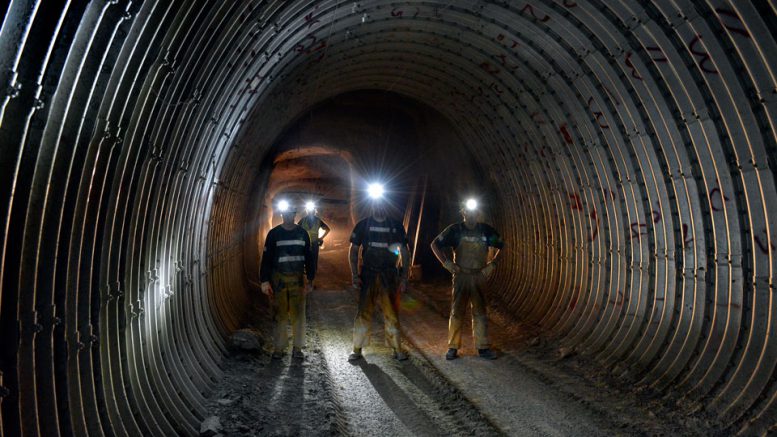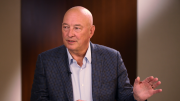Catherine Boggs, chairperson of Hecla Mining (NYSE: HL), the largest silver producer in the United States, sees opportunities for juniors to tap private wealth, a new lifeline in solar panels and geopolitical soundness in North American operations.
Boggs, speaking online Wednesday at The Northern Miner’s first Global Mining Symposium for 2023, mentioned how family funds under private management have grown to US$115 trillion in 2019 from US$38 trillion in 1989, according to the U.S. Congressional Budget Office. If only 1% was targeted at mining, it would still be a substantial sum.
Some juniors may opt for family offices over the burden of a royalty or streaming deal, or private equity investment, which may limit long-term plans for projects by its focus on divesting at some stage to show a profit, Boggs said. Plus, family offices may be attracted to mining’s new focus on the green energy transition.
“Typically, family offices have done it passively, either through exchange-traded funds or private equity funds, but what you’re seeing now is this appetite because they’ve become more professional, they’ve also developed some expertise in this area,” Boggs said. “And they also tend to be able to move pretty quickly.”
Hecla, with silver resources estimated at 240 million oz., plans to start production in June from its Keno Hill gold project in the Yukon after acquiring the part of Alexco Resources it didn’t already own for US$72.2 million last year. Alexco halted output at Keno last June after falling behind in development.
Hecla’s gold output is to be 160,000-170,000 oz. this year, below last year’s levels and is to fall in 2025 to 142,000-161,500 oz., the company says. Silver production in 2023 is expected to be between 16 million to 17.5 million oz. after a boost from Keno Hill and rise to as much as 20 million oz. in 2025.
Here comes the sun
The silver production increase will help the industry try to meet demand for solar panels. Hecla chief executive officer Phil Baker has said solar energy production could reach 500 gigawatts in a decade, requiring 670,000 oz. per GW, a boon for the silver industry.
“This is the greatest time to be not only in the mining industry but to be in the solar business,” Boggs said. “There’s not enough silver and you know, Hecla is very lucky because we operate in some of the best and safest jurisdictions in the world.”
Hecla, the oldest precious metals mine operator in North America at 130 years, operates across the continent’s west from a base in Idaho, where its Lucky Friday mine has been operating for more than 80 years, through Colorado, Washington, British Columbia and the Yukon to Alaska. It also mines in Quebec and explores in Mexico in an approach offering a bulwark against some of the current geopolitical mayhem around China and Russia.
“We have at times looked at opportunities elsewhere and had discussions around political risk,” Boggs said. “As a strategy, there were predecessors on the board who were very thoughtful about making silver a priority and making these jurisdictions be a priority.”
Along the way there have been some trying cases, such as a lawsuit started by an investor alleging Hecla’s US$462-million deal in 2018 to buy three Nevada gold mines from Klondex Mines was an overpriced boondoggle that caused layoffs and a cash crunch.
Superfund sites
There was also the US$263 million settlement in 2011 to resolve claims by the Coeur d’Alene Tribe and federal and state governments over mine waste in Idaho, one of some 40,000 toxic sites identified by the U.S. Environmental Protection Agency in its Comprehensive Environmental Response, Compensation and Liability Act program, informally called Superfund. Some of the Idaho sites were acquired from companies that failed and were unable to clean up their properties and are part of a bigger picture about educating people about mining, Boggs said.
“Hecla quite rightly settled those suits and has learned how to manage those kinds of sites much better and much more proactively and that’s been a good thing and ties to what we’re talking about: how do you rebrand mining,” she said. “I would offer that there’s any number of examples where there have been responsible mines built and reclaimed, and you would never know it.”
Governments should encourage exploitation of tailings and Superfund sites without potential liability, she said.
“The U.S. government is funding research and development in how to extract rare earth minerals and critical minerals from coal ash and coal residue and acid mine drainage. The next step is encouraging Congress to pass some Good Samaritan kinds of laws.”






Be the first to comment on "GMS: Hecla chairperson promotes family offices, solar power, North America focus"